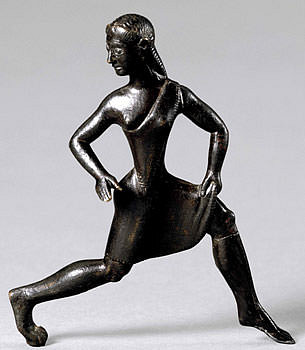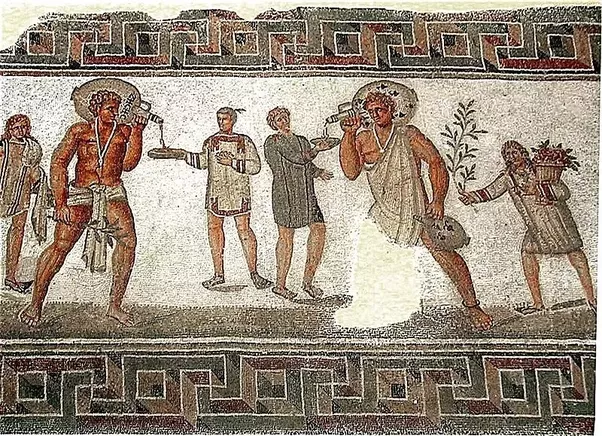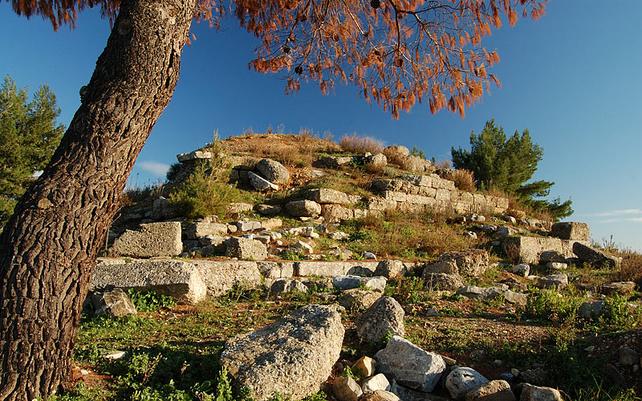
.jpg)
The legend of Sparta captures the
imagination of many through literature and movies. The image of a society
dedicated to the military and warfare fascinates even amateur historians. Concrete information about Sparta is limited. Definite details about the lives of women in Sparta are
even less certain. On Sparta
by Plutarch is one of the primary sources which provides details about the monarchy and culture of Sparta. Sarah Pomeroy
uses Plutarch as one of her sources in her book, Spartan Women.
 |
| Spartan Women by Sarah B. Pomeroy |
Pomeroy scrutinizes the sources and
presents a fuller portrait of many facets of the women of Sparta. Sarah Pomeroy,
born in 1938, attended Barnard College and earned her doctorate at Columbia
University. She is presently retired after many years of teaching at Hunter
College in New York City and remains a
leading authority on the lives of Greek and Roman women. Her sifting through the
sources presents Spartan women as distinctive when compared to the rest of ancient
Greece. The women of Sparta simply possessed more influence than other Greek women.
Pomeroy divides her work into organized
sections which feature different aspects
within the lives of Spartan women. The first three chapters deal chronologically with the routines of the
women. Starting with “Education,” “Becoming a Wife,” and “The Creation of
Mothers,” Pomeroy lays out the topics important for women and girls. The final
three chapters examine, “Elite Women,” The Lower Classes,” and “Women and
Religion.” She offers a concluding section which summarizes her points and
examines Spartan ethnicity through the issues of gender. The volume also offers
a detailed appendix which provides extensive data on her sources.
| Ancient Greek city-states from www.ixl.com |
Within most of Greece, there were limited educational
opportunities provided for women. Literacy was important for the male citizens
of Athens because democracy demanded an educated citizenry. Literacy was unavailable for the women. The
opportunities for Spartan women differed from their Athenian sisters. The
opportunities for education among the ladies and girls of Sparta exceeded those
of other Greek women. Women trained in
public speaking and “were encouraged and trained
to speak in public, praising the brave, reviling cowards and bachelors.” (9) Verbal
skills link to the necessity of literacy. Poetry and philosophy became an
interest for Spartan females and while there are no existing examples of their
work their effort in the arts continued into the Hellenistic period. Physical
education and music were also educational foundations of female education in
Sparta. There was a religious link to music and athletics as these activities coupled
with religious festivals. Athletic competition and horsemanship
were opportunities for women as part of the physical education system
established by Lycurgus. Nudity was also a component of sporting events as
girls competed either nude or wore a peplos
(tunic) with an exposed breast. (25)
 |
| Spartan Woman Bronze Statue from Ancient History Encyclopedia |
Eugenic
principles greatly influenced the suitability of male babies as Sparta
regularly practiced male infanticide by exposing unsuitable baby boys to the
elements. There is no evidence that female children faced elimination through
exposure as adult women cared for female infants.
Spartans placed great emphasis upon marriage,
and they used many novel methods for spousal arrangements. Young adults often
paraded in the nude during festivals which provided potential spouses a
complete view of potential partners. It's possible that Spartan women had the
opportunity of practicing polyandry as multiple fathers provided help in
childcare. But it appears that Spartan society used numerous options in
producing children including wife-sharing or husband-doubling. (40) Illegitimacy
was not a fear for Sparta as long as all participating adults consented. An examination
of Spartan martial arrangements reveals that women were active participants in
the marriage process.
Spartan living
arrangements gave women a leadership forum within the Oikos. Men usually dined with the other men in the syssition. Therefore women remained in charge
of the food dispersal. (52) The diet of Spartan women even surpassed that of
the men since men and boys were responsible for adding to their rations. The
nourishment provided to Spartan females was of such quality that Xenophon
remarks on it. (52)
Upon marriage, relationships
faced numerous issues which reduced fertility. The prevalence of homosexuality
reduced the number of children as men engaged in sex with other men when women
refused the men sex. The regulations of Lycurgus placed strict limitations on
the number of visits newly married couples could receive. It is probable that
Spartan ignorance regarding fertility and frequency of intercourse decreased
the number of children born in the first few years of marriage.
Mothers also were
highly influential in the lives of their sons. Spartan women took great pride
in a son who distinguished himself in battle. But Spartan mothers also were
“renowned for enthusiastically sacrificing their sons for the welfare of the
state.” (57) Mothers would not abide a son who abandoned his post or exhibited
cowardice. A son who disgraced his state with cowardice might face death from
his mother. A mother could assume the power of the state and kill her son if he
fled the battlefield. Aristotle objected to the power of Spartan women when he
observed that women often dominated their sons and even their husbands in
certain situations. (69)
Many ancient societies
believed that a woman who refused childbirth was unpatriotic. Sparta valued so
highly mothers that only men who died in battle and women who died in
childbirth received gravestones. (52) A good example of an assertive mother was
Gorgo who emphasized the special role of Spartan women when asked about the
power of Spartan females. A woman from Attica asked her, “Why is it that you
Spartans are the only ones who can rule men?” Reportedly her answer was, “That
is because we are the only ones who give birth to men.” When an Ionian visitor
bragged about her special weavings, a Spartan woman responded by showing off
her “four well-behaved sons” as the product of a “noble and honorable woman.”
(135) Spartan society recognized the importance and contribution of their women,
and this appears in the power and recognition given to their females.
Sources provide more
information on the elite women than helot or doulai (slave) women. Land
allotments were more favorable to Spartan women than other Greek females. Most lands
fell under the control of the state and women. Because the women of Sparta lived
longer, they often controlled the land as heiresses. Reforms also allowed women
ownership of property and land. Aristotle drew attention to the huge number of landowning
heiresses and the presence of oliganthropia (sparse male citizen population). Wealthy
women gave elite females a voice in the household and society. Aristotle
noticed this as well when he took notice that women had a larger role in
aggressive and warlike societies. (92)
 |
| Helots from Medium |
Lower class women
present a challenge for the historical sleuth. Several classes of people
outside of citizens lived in Sparta. The helots were farmworkers essential to
Spartan society since Spartan citizens did not engage in agriculture. The
helots functioned as slaves of the state but were allowed to live as a family
in housing. Helots served at the pleasure of citizens, and any citizen could
murder one for little cause. Some helots served in the military and became
parents of half helot children. Mothakes, children of Spartan fathers and helot
mothers might rise to recognition from their fathers and achieve freedom.
Other residents also
added to the variety of Sparta. Free non-citizens or periokoi were free residents but not citizens. They engaged in crafts,
as merchants, and sometimes agriculture. Other women also worked in the
community. Spartan nurses had a high reputation and were often employed by
foreigners. Lower than helots were the
douloi or slaves who often served in
households. Doulai women often weaved cloth and clothing for the household.
Women were also closely
engaged in the religious cults and rituals and played an integral part in the propagation
of the faith. Women took an active part in song, dance, feasts, offerings, athletics,
chariot processions and weaving for idols. (106) The Greek pantheon contained
numerous goddesses and many of the rituals and festivals centered on female deities.
Artemis was an especially important fertility goddess who protected women and
children. She was also closely associated with another nature goddess Orthia.
Women actively participated in music, dancing, and celebration. Leaden figures
from the seventh and sixth centuries demonstrate women playing flutes, lyres,
and cymbals. Tales of abduction also feature during the festival and rituals may
express the condition women find themselves when leaving their secure families
only to arrive in the insecurity of a new marriage. (107) Other festivals and
ritual centered on a wide variety of gods and goddesses with each having their
distinctive rituals.
 |
Remains of the Menelaion from University of Warwick |
Especially important to
Sparta was the Menelaion, which was the shrine of Helen, Menelaus, and Helen’s
brothers Castor and Pollux. An interesting aspect of the Menelaion was the
evidence produced through archaeology that Helen was not subordinate to her
husband and even appeared independent of men. Similar to Artemis the worship of
Helen also consisted of music and dancing.(114) Spartans prized beauty among
females and Spartan women had a reputation for beauty among Greeks which may
explain the importance of the cult of Helen. Herodotus tells the story of a
deformed girl whose nurse carried her to the shrine of Helen begging for
Helen’s intervention. Helen appeared, and after Helen touched the child, she
grew into one of the most beautiful girls of Sparta causing quarrels among men
who pursued her. Her beauty was so great that the Spartan King Ariston made her
his third wife. (132-133)
Spartan women
understood the rules and standards of their society, but they had a greater
opportunity for participation than the typical woman of Greece. Spartan women
were not passive but took advantage of the many occasions for involvement and
leadership their society gave them. Women possessed power over their oikos often directing the nutrition and
affairs of the household. They participated in the denunciation of cowards and
even could bring death to their cowardly sons. Spartan women were outspoken and
gained a reputation among Greeks as not only beautiful women but as blunt and
forceful.
 |
| Plutarch, On Sparta |
Pomeroy used numerous
sources in her research one of which was Plutarch. Plutarch was born in Greece
and later became a Roman citizen. He lived from about AD 46 to about AD 120 and
became known for his histories, essays, and biographies. His works include Parallel Lives and Moralia. Plutarch’s On Sparta
describes the lives of Sparta’s residents and the significant events of many of
the leading citizens. When read with Pomeroy’s Spartan Women, Plutarch provides a fuller picture of Sparta.
 |
| Plutarch from Wikipedia |
Plutarch begins his
work with the legendary Lycurgus, often recognized as the lawgiver. Even Plutarch
recognizes the almost mythical status of Lycurgus, who possessed many
conflicting accounts of his life travels and death. Contemporary historians have
many doubts regarding the accounts of Lycurgus and recognize the difficulty of
placing him into the history of early Sparta. According to Plutarch, Lycurguswas responsible for many of the reforms which shaped Sparta. One of Lycurgus’
chief reforms was the formation of the Council of the Elders which was composed
of the Two Kings and twenty-eight of the citizens over sixty. The council acted
as a stabilizer between the tyranny of a monarchy and the chaos of democracy.
(8)He also redistributed the land and declared gold and silver invalid. With
the use of iron for currency, the practice of hoarding became impractical. The
introduction of common dining or messes increased comradeship and provided
opportunities for men and boys to bond. Perhaps the most monumental reforms were
the changes brought to the family. Lycurgus placed regulations upon newlyweds
and penalized those who did not marry. Above all children belonged to the state,
not to their fathers or mothers. Fathers brought children to a spot called the lesche where the male child received
confirmation of his worthiness. (20)
 |
| Lycurgus from Wikipedia |
Agesilaus was the Eurypontid
king who came into office through remarkable circumstances. His father,
Archidamus had another son Agis by Lampido a noblewoman. Because Agesilaus was
not the heir, he brought up in the agoge,
where he received the training and severe lifestyle that young men and boys
faced. After his half-brother’s death, Agesilaus became king after the
legitimacy of Agis’ son Leotychidas came under question. The irony behind Agesilaus
as king was his imperfection. One of his legs was slightly shorter than the other,
but Agesilaus performed well showing a unique ability to relate to his men due
to his time in the agoge. Close to Agesilaus
was Lysander, his lover whom he knew from his time in the agoge. Agesilaus demonstrated great courage on the battlefield
refusing to retire from the battlefield until he saw the front despite his
great wounds. Along with Lysander, Agesilaus pursued an aggressive military
power, engaging in warfare until his death at 84.
By the time Agis IV
assumed the monarchy, Sparta had become greedy, and the state became flooded
with silver and gold. Agis expressed a desire to reform society and
redistribute land and eliminate debt. Due to the opposition, the ephors sentenced Agis to death by
strangulation. After Agis’ death, his brother Archidamus fled leaving Agis’
wife behind who was forced to marry Leonidas’ son Cleomenes. While Agis’ wife
Agiatis pleaded against a forced marriage eventually, she made Cleomenes “a
good loving wife.” It’s possible that Agiatis influenced Cleomenes in pursuing
the reforms of Agis. After the death of his father, Cleomenes assumed the
throne. Cleomenes after gaining confidence pursued the reforms proposed earlier
by Agis, yet the ephors were an
obstacle. Cleomenes removed the ephors by ordering their death. He began his
reforms by handing over his lands first and then followed by his father-in-law
Megistoous. Soon after others submitted their land, the land was divided
equally. He also reformed the agoge and
restored the training and messes. (106) After the defeat at the hands of the Macedonians,
Cleomenes face exile in Alexandria. His mother Cratesicleia and children faced imprisonment
by Ptolemy as ransom as a condition for his help. After Cleomenes committed
suicide, she faced death heroically, and Plutarch remarks that “during these
final stages Sparta played her role
through the prowess of women which was equally matched with that of men.” (131)
On Sparta also includes
a section of sayings by Spartans and sayings by women. These sayings reflect
the martial character of Sparta. For example, when questioned Agesilaus
about the lack of fortifications in
Sparta he responds by pointing to the armed citizens and simply saying, “These
are the Spartans’ walls.” (141) When a mother heard that her son was alive
after escaping the enemy, she wrote to him, “You’ve been tainted by a bad
reputation. Either wipe this out now or cease to exist.” (185)
| Cleomenes from Wikipedia |
Plutarch serves as an
effective complement to a reading of Spartan
Women. While Plutarch primarily examines the lives of important kings and
Lycurgus the lawgiver but the influence and importance of women are apparent
throughout. Lycurgus is careful in his instruction regarding marriage,
newlyweds, and family life because he believes the oikos and the polis must
maintain a balance. Homelife and marriage are important in the maintenance of
the state and a healthy family produce children who protect the state. Stong
women such as Agiatis and Cratesicleia were both instrumental in the reforms of
Cleomenes due to their great influence upon him. The stoic and honorable death
experienced by Cratesicleia remains as a memorial to Spartan women.

No comments:
Post a Comment